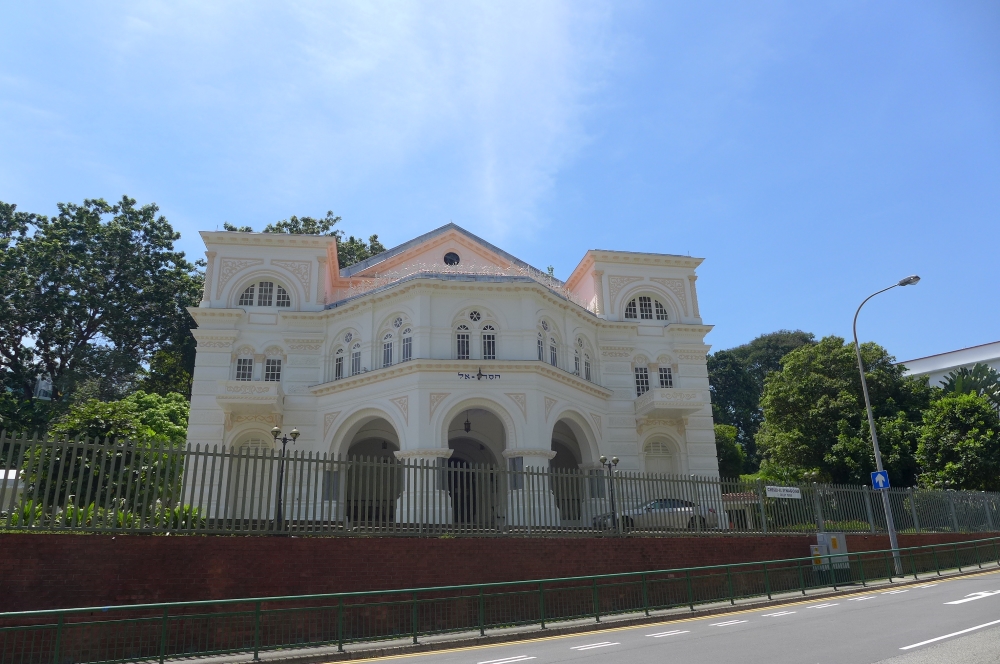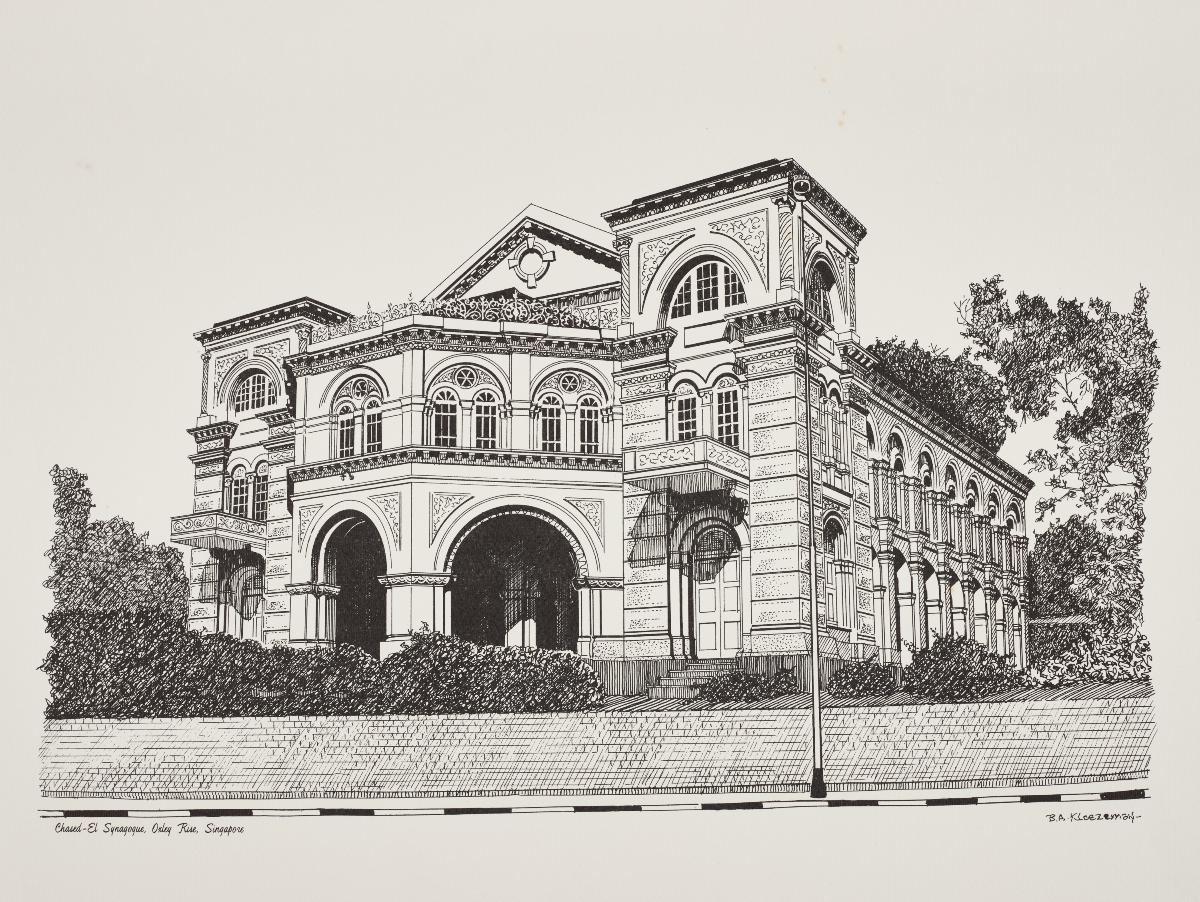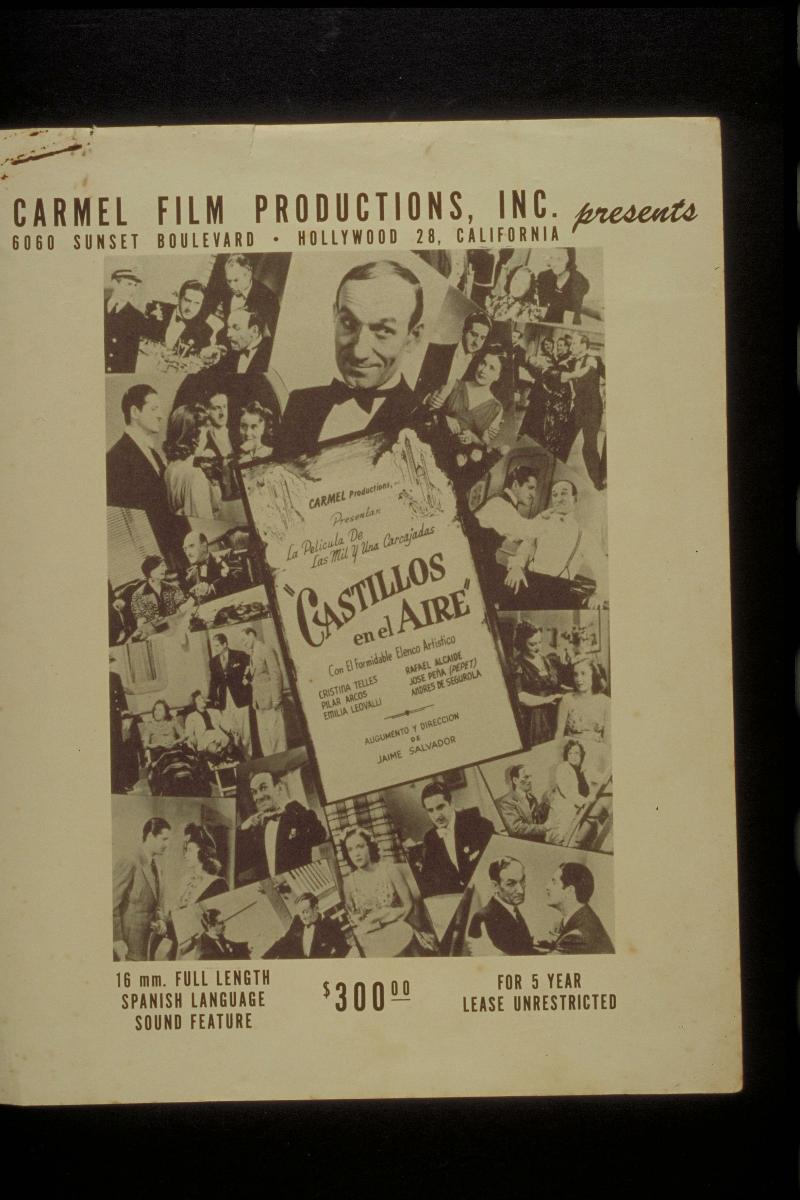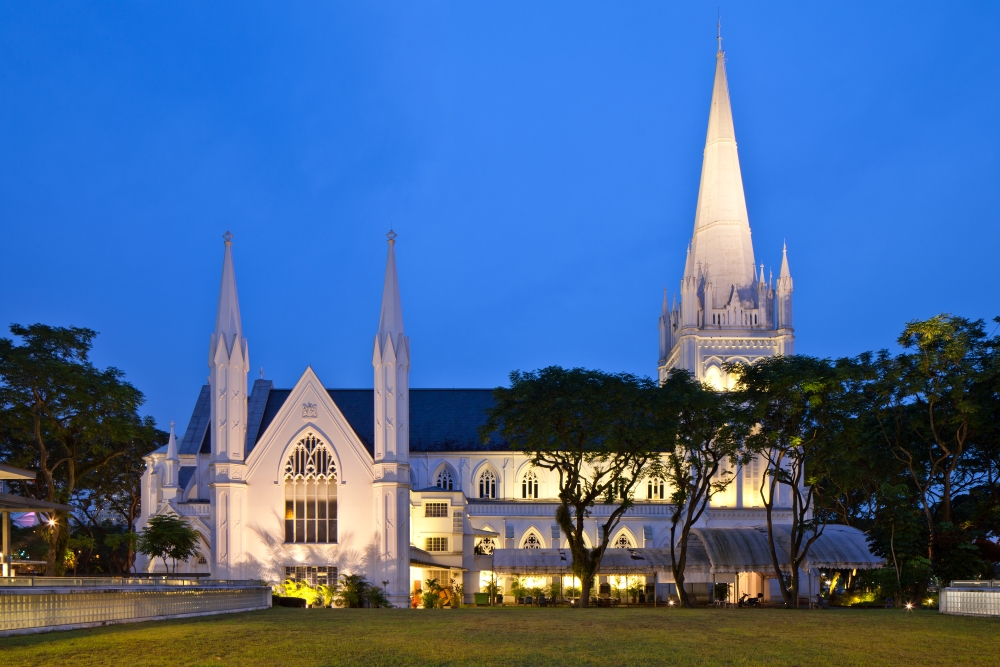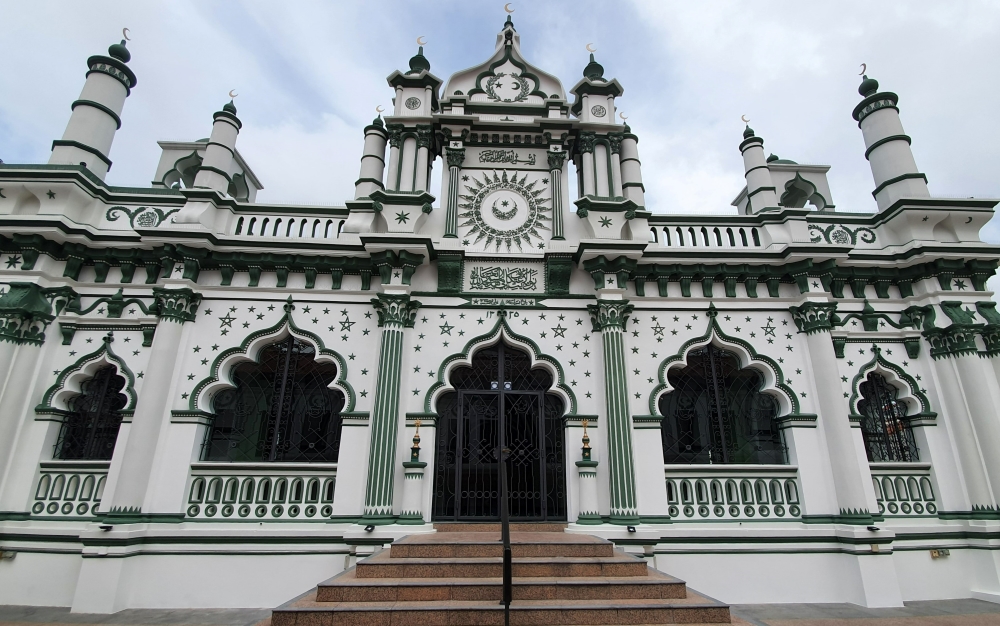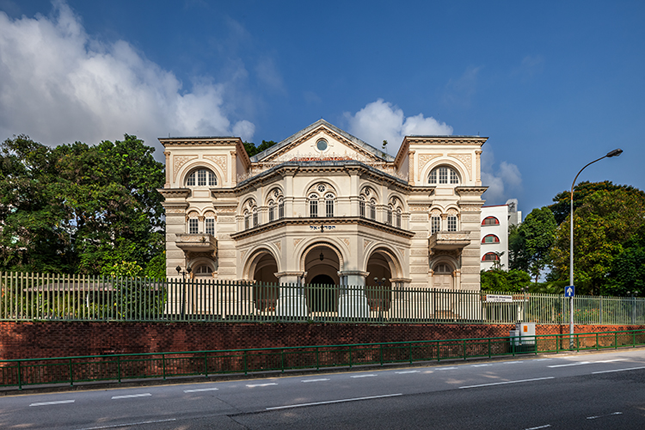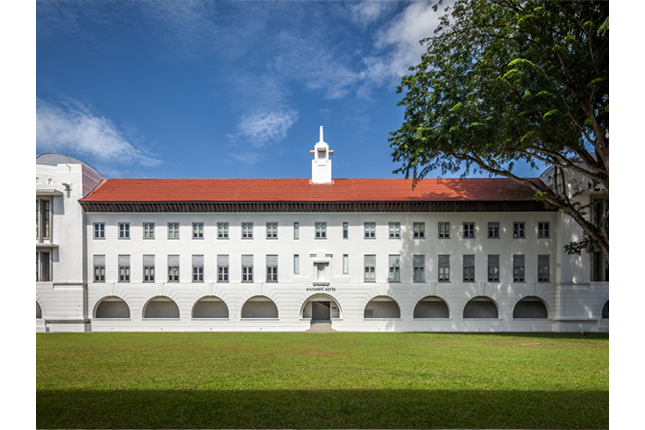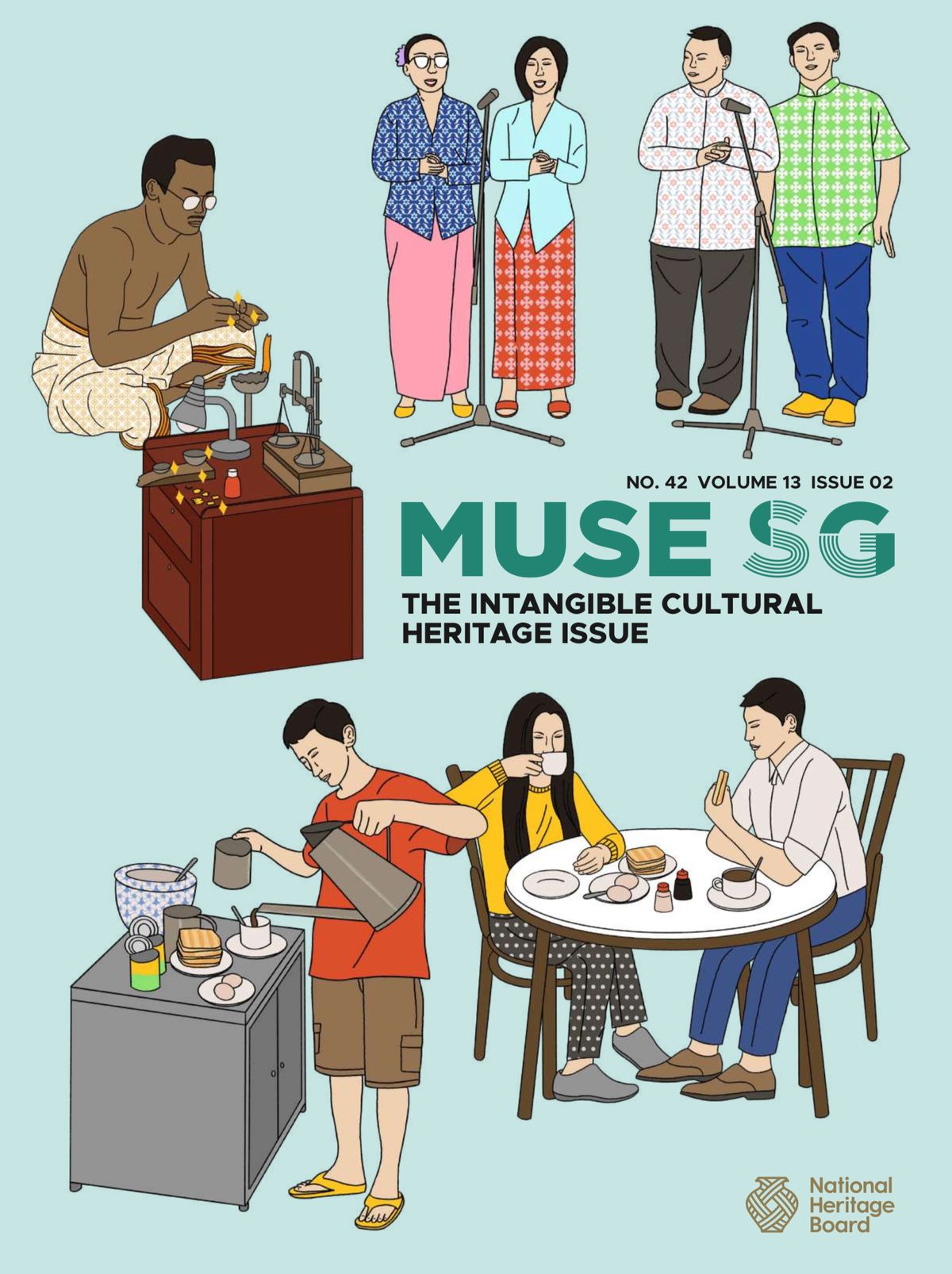
Read more about PSM’s efforts to safeguard Singapore’s built heritage in MUSE SG Vol 14, Issue 1.
Built: 1905
Restored: 2016–19
Tucked away in the leafy, quiet neighbourhood of Oxley Rise, the Chesed-El Synagogue is one of two synagogues in Singapore, the other being the Maghain Aboth Synagogue, that cater to the small Jewish community numbering around 2,500. The Chesed-El was established by Manesseh Mayer in 1905, a prominent Jewish merchant and philanthropist in Singapore, to accommodate worshippers after the Maghain Aboth had become overcrowded as the local Jewish population had ballooned over the decades since the latter opened in 1878. Meyer, who came to Singapore in the mid-1800s, had also been involved in the construction of the Maghain Aboth.
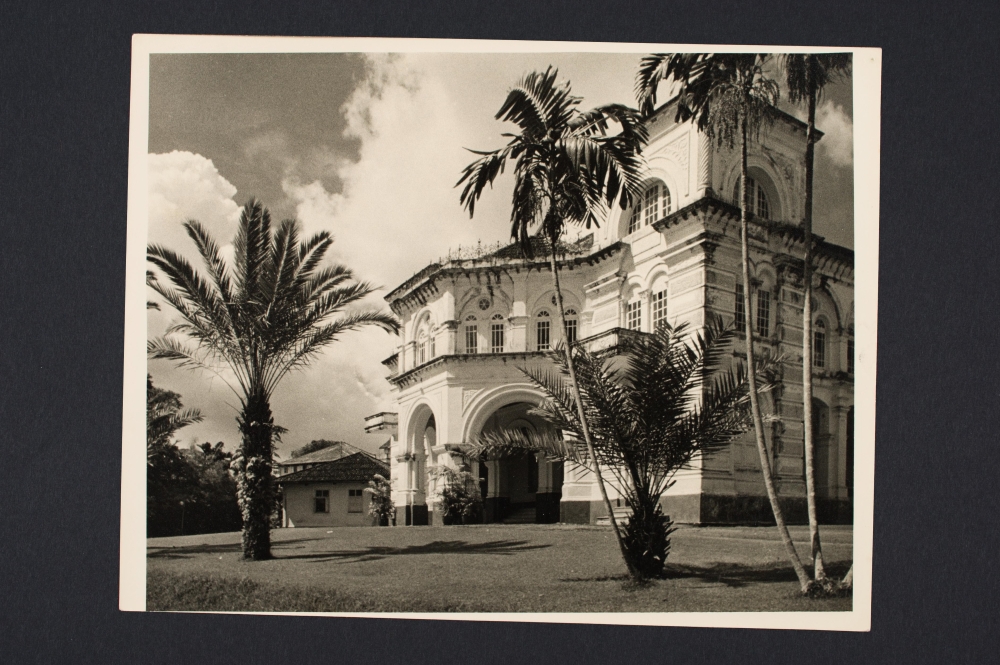
National Museum of Singapore Collection
The neoclassical Chesed-El was designed by R.A.J. Bidwell of eminent colonial architectural firm Swan and Maclaren. The building’s facade boasts elaborate floral plasterwork, continuous cornices and heavy embellishments. Adding to the majesty of the edifice is a three-arched carriage porch at the entrance with Corinthian columns as well as tall arched windows found all throughout the building. Directly opposite the entrance is the ark, where Torah scrolls are stored, facing westward towards Jerusalem.
In 2016, with grants from the National Monuments Fund, the Chesed-El embarked on a major restoration project. It carried out structural strengthening works on its historical cantilever reinforced-concrete canopies to prevent them from collapsing. After engaging experts to carry out studies on the issue, the synagogue decided to respond to age-old structural issues with innovative engineering solutions—such as the insertion of rectangular hollow section steel beam structures and using lightweight materials to reduce loading stress on the canopies.
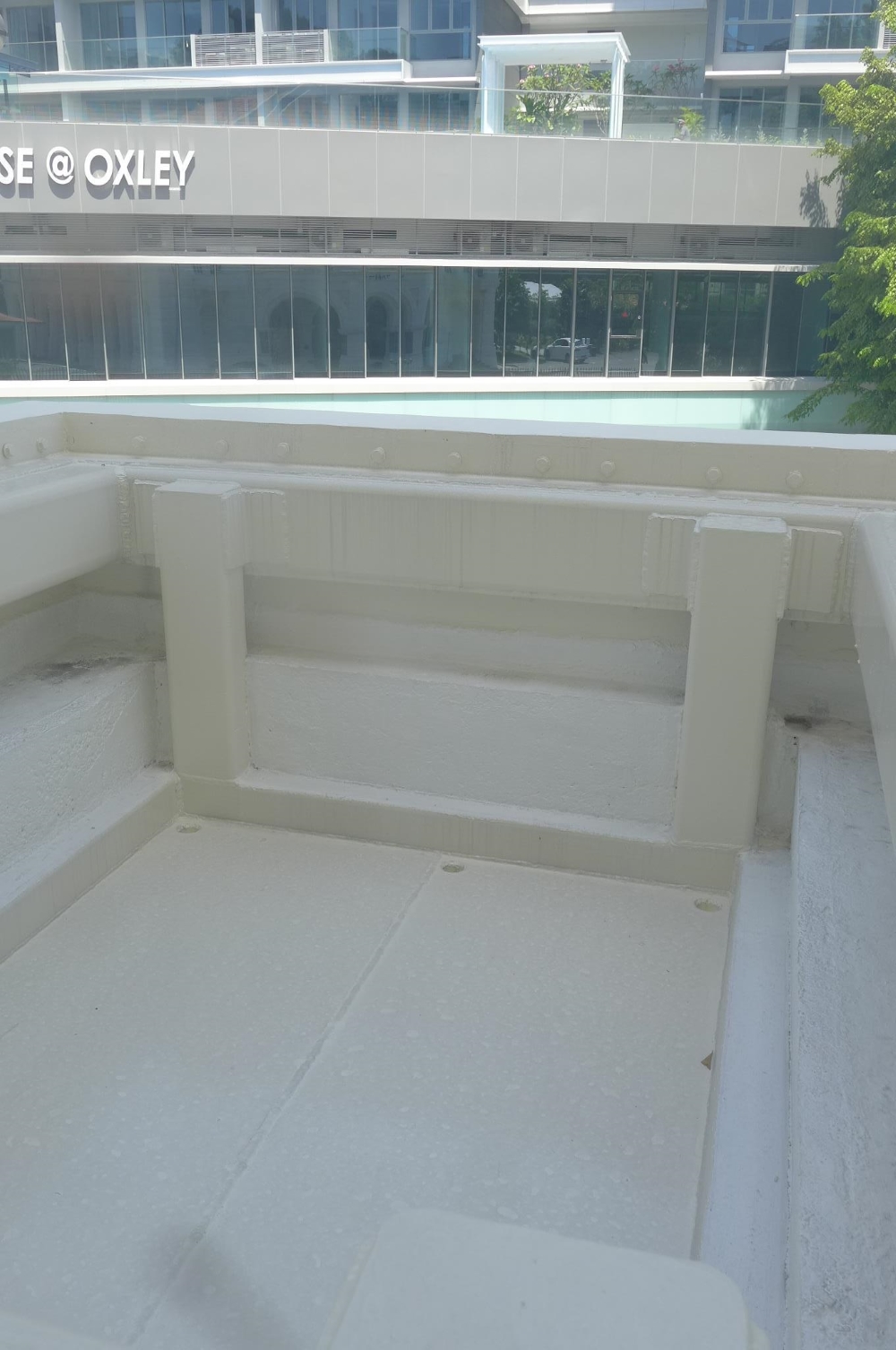
The modern techniques ensured the stability of the canopies in the long run, without needing to reconstruct the canopies. Significantly, the works were executed with minimal impact to the historic ornamental features on the canopies. Besides strengthening the canopies, the synagogue also fixed leaking roofs as well as installed new reinforced floor slabs and marble slabs that were identical to the original marble flooring. In addition, the building received a new coat of paint.
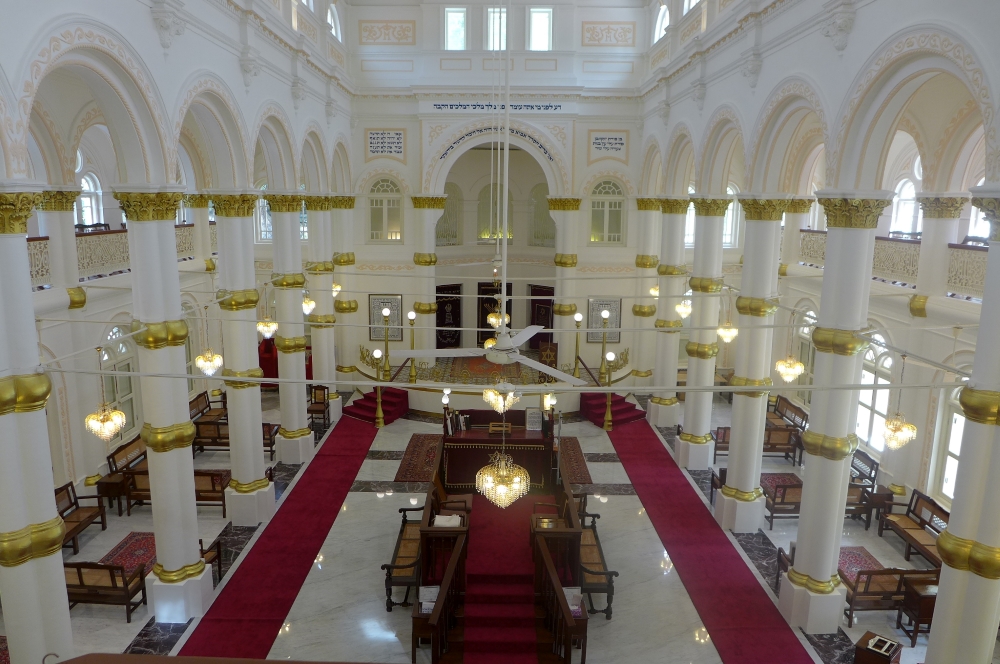
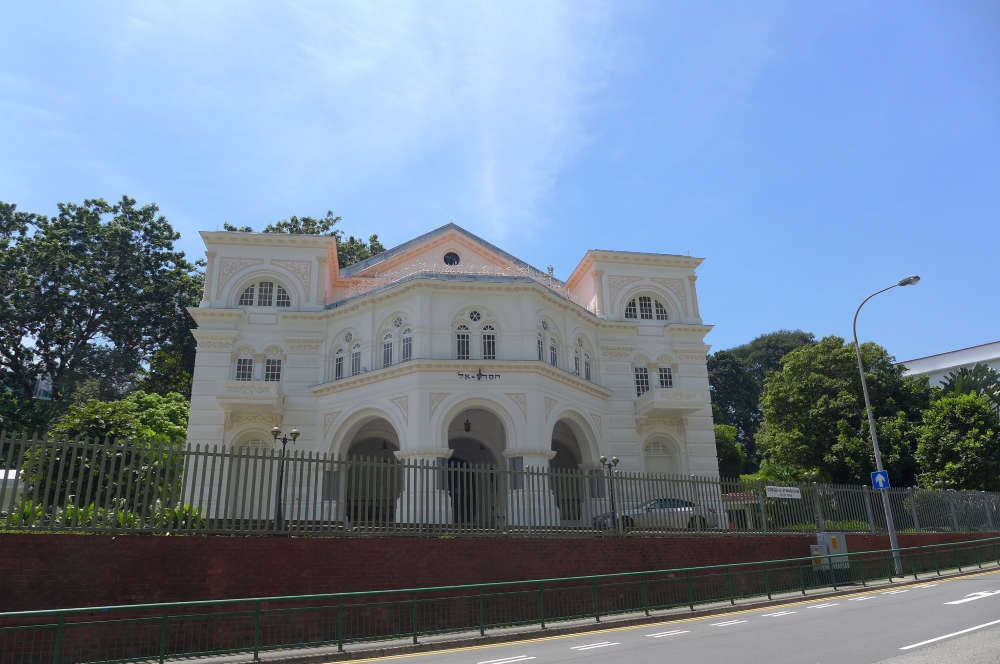
In 2019, the Chesed-El again received financial assistance from the National Monuments Fund and managed to carry out works for micro-piling and reinforcing a retaining wall behind the edifice.
Today, the synagogue continues to play central role in the Jewish community in Singapore, hosting religious festivals and events such as the Passover, Hanukkah as well as Bar Mitzvahs and Bat Mitzvahs.
About The Preservation of Sites and Monuments
The Preservation of Sites and Monuments (PSM) is a division under the National Heritage Board. Its primary role is to safeguard Singapore’s built heritage by identifying monuments that are of “historic, cultural, traditional, archaeological, architectural, artistic or symbolic significance and national importance”, and recommending them to the state for preservation. Gazetted National Monuments are accorded the highest level of protection by law. National Monuments comprise religious, civic and community structures, each representing a unique slice of history in multicultural Singapore. Read more about Preservation of Sites & Monuments, and National Monuments here.




